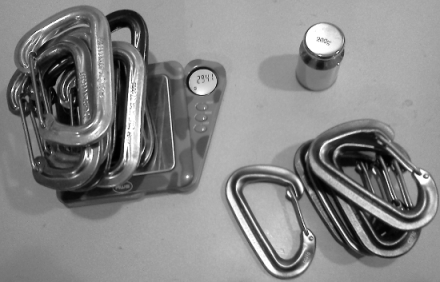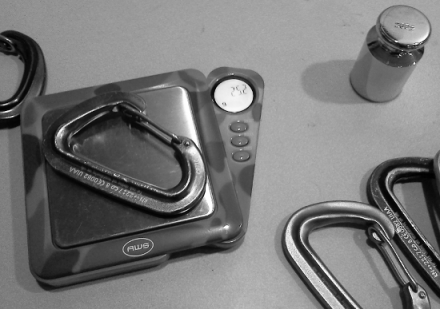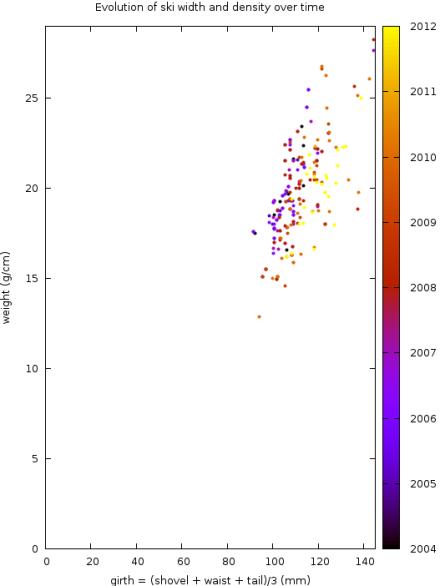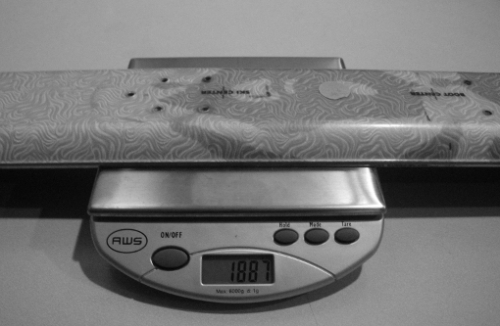Back to business, measuring mass.
Carabiner weight matters to climbers. Sure, if one biner is 10 grams heavier than another, it’s no big deal. But, if you multiply by 20, that’s almost a half pound. The BD Neutrino, and later, the Metolius Mini carabiners have both advanced the cutting edge of lightweight climbing hardware. I like ’em both enough to have a few. Everything measured here was purchased in or before 2010.
These biners are lightly used, so they will be slightly lighter, and have more variation, than new.
Neutrinos:
Neutrinos individually: 36.9 36.9 36.7 36.9 36.9 36.4 36.7 36.3 Weighed together: 294.1 g.
Correcting for finite sample size, these numbers give 36.8±0.3 g.
The lighter two biners are not anodized, and were purchased in 2009. The other 6 were from a “rack-pack” purchased in late 2010 and are anodized. It’s possible that anodization or a manufacturing change added a tiny amount of mass.
Black Diamond claims 36g. With these few measurements, 37g would be more appropriate, but there’s not enough resolving power here to tell the difference between 36±1 and 37±1.
It’s a go-to carabiner. Thanks for making it, BD.
Metolius mini FS
Weighed individually: 25.3 25.2 25.2 24.5 24.9 25.2 Weighed together: 150.4 g
Correcting for finite sample size, these numbers give 25.1±0.3 g.
Purchased in autumn 2010.
Metolius claims 25 g. Right on.











